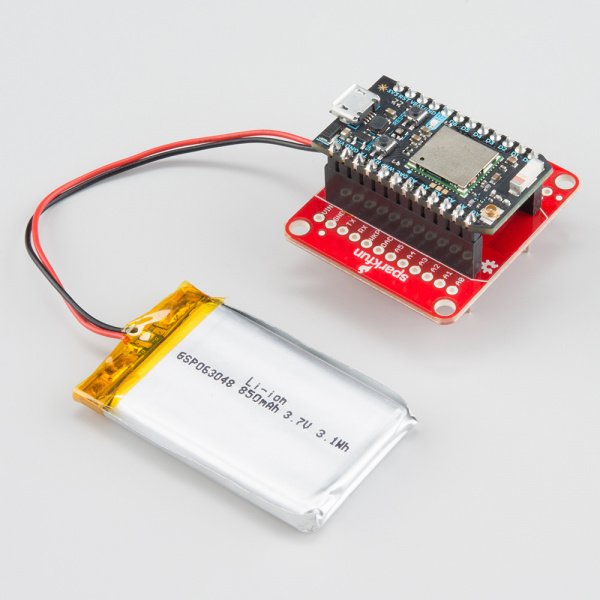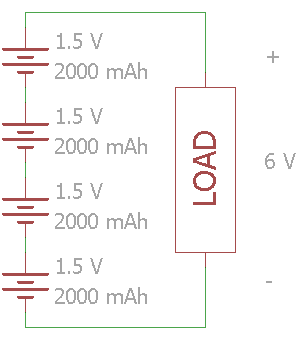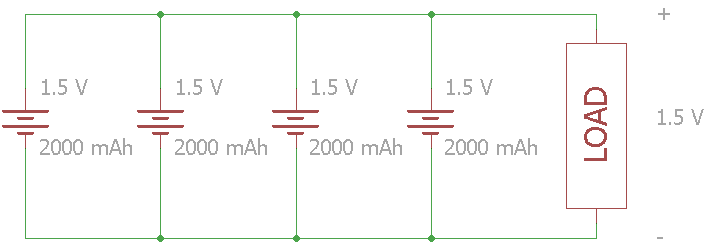What is a Battery?
Usage
Single Cell
Some circuits can be powered by a single cell, but make sure that the battery can provide enough voltage and current.
If the voltage is too high or too low for your circuit, you will likely need a DC/DC converter.
Series
In order to increase the voltage between a battery's terminals, you can place the cells in series. Series means stacking the cells end-to-end, connecting the anode of one to the cathode of the next.
By connecting batteries in series, you increase the total voltage. Add the voltage of all the cells to determine the operating voltage. The capacity stays the same.
In most consumer electronics that use alkaline batteries, the batteries are stacked in series. For example, this 2x AA battery holder can raise the nominal voltage to 3 V for a project.
Parallel
If the voltage of a single cell is adequate for the load, you can add batteries in parallel to increase the capacity. Note that this also means increasing the available current (C-Rate).
Be careful when connecting batteries in parallel! All the cells should have the same nominal voltage and same charge level. If there are any voltage differences, a short circuit could occur causing overheating and possibly fire.
Series and Parallel
If you want to increase voltage and capacity, you can combine series and parallel batteries. Once again, make sure that the voltage level is the same for the batteries in parallel, as a short circuit can occur.
In large battery packs, especially lithium-ion, you often see the configuration listed using 'S' and 'P' for series and parallel. The configuration for the circuit above is 2S2P. As a practical example, modern electric cars use massive arrays of batteries connected in series and parallel.



